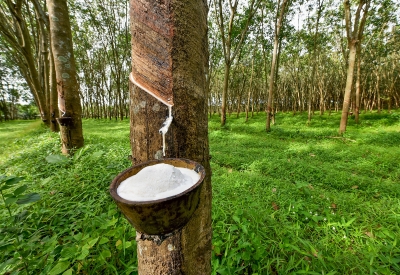
In the wild, the rubber tree will grow to heights of 100 to 130 feet, and can live up to 100 years. Its most famous feature is the milky white sap, known as latex, which flows freely from the tree when a sliver of bark is removed. A rubber tree, also referred to as rubberwood, can be tapped for latex once it reaches approximately six years of age. In order to reproduce, the fruit of the rubberwood burst open when ripe, scattering its many seeds in an area spanning up to 100 feet from the tree.
Hevea brasiliensis is a species of rubberwood that is native to rainforests in the Amazon region of South America, including Brazil, Venezuela, Ecuador, Colombia, Peru, and Bolivia. These trees are generally found in low-altitude moist forests, wetlands, riparian zones, forest gaps, and disturbed areas. It is a quick growing tree, often the first to establish itself when a gap in the canopy is produced but may be shaded out as more trees fill in the canopy opening. Today, commercially-produced rubber can also be found throughout much of Southeast Asia and Western Africa.
First discovered by the ancient Olmec, Maya, and Aztec, the latex sap from the rubber tree was once used to make rubber balls, to waterproof clothes, and even to form homemade shoes. Today, the latex sap from the rubber tree is still used in the modern processing of rubber and is often a substantial source of income for indigenous populations.
Credit : Rainforest Alliance
Picture Credit : Google




